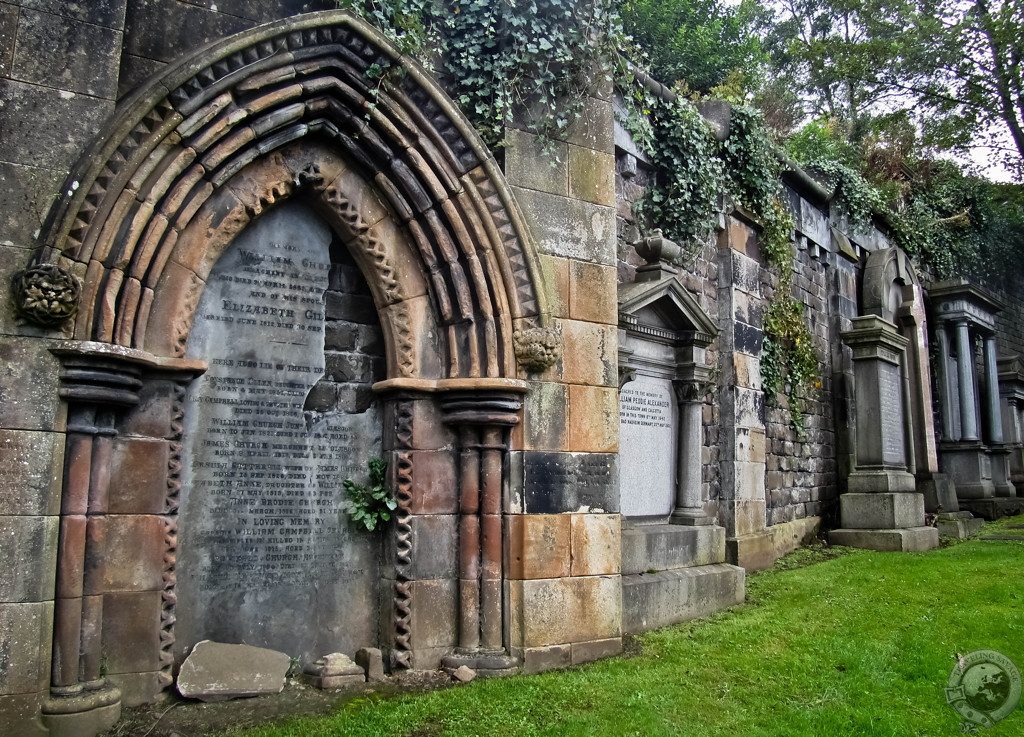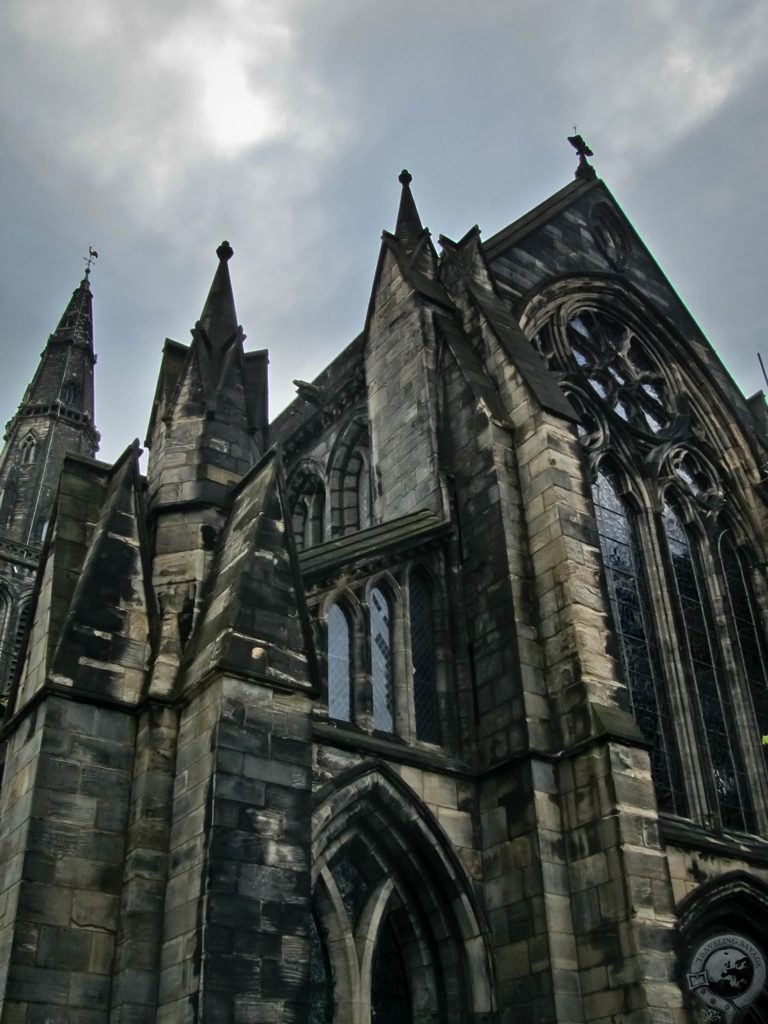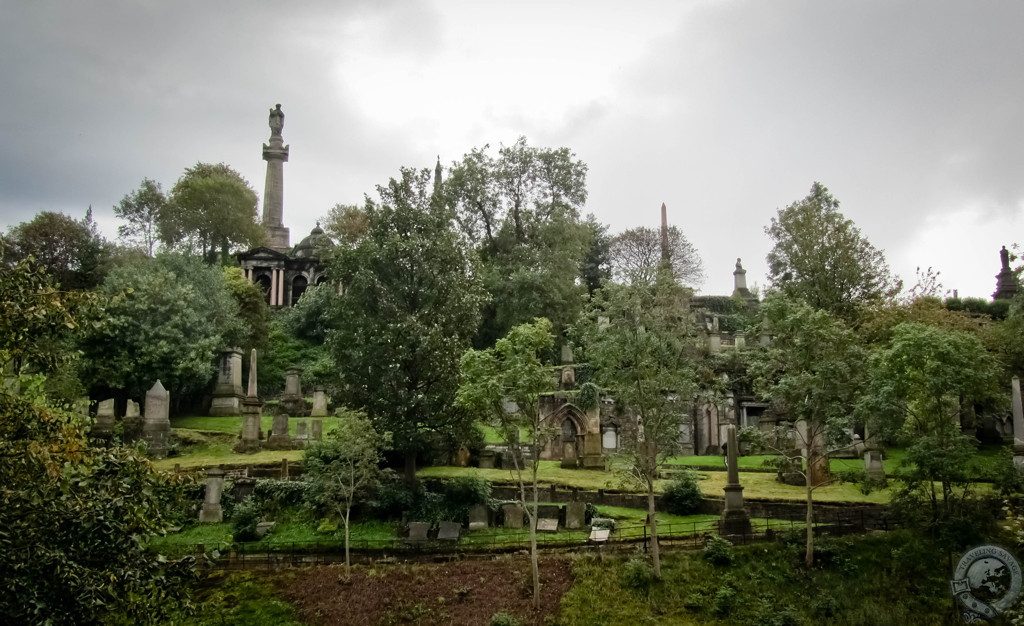Glasgow, Scotland | September 18, 2011
There was a moment when the sun dodged the clouds, and I realized I was the only terrestrial soul on this hillock of half a hundred thousand dead. The hollow voice of St. Mungo’s Cathedral, an awful and awesome nitred-stained edifice, echoes across Glasgow’s struggling east end. The Sunday morning vortex pulls parishioners across the cigarette butt-strewn cobblestones and into the church’s Gothic arches. I tramp across too-lush grass, the site of untold unmarked graves, and stalk down the streets of the Necropolis, Glasgow’s city of the dead. I hadn’t come to worship.
St. Mungo’s, née Kentigern, stands on a small hill now tight to other buildings, and every attempt to capture the ornate medieval structure on film was cast skyward, futilely. Copper sheeting, long since gone to green, caps the Gothic bastion, its facades intending to uplift the spirit while actually snaking a tendril of mortal terror into the viewer. A sooty blackness from Glasgow’s industrial age drips from the cathedral’s higher points as if the accumulated sins of its visitors had become manifest as they were absolved. The sound of traffic, that eternal drone, flows around the cathedral and its necrotic yard; time had chosen to avoid this particular place.
Five years ago I had crossed the bridge from St. Mungo’s to the Necropolis. The memory is a Poe’s poem, a Goya sketch. Crazily canted tombstones had jut from the hillside like the morbid pincushion of spinster psychopomps. That day the clouds of Glasgow were an entity crying over the barred mausoleums and marble sepulchers, and my girlfriend and I had drifted over the dead to the sound of raindrops on our hoods. I wondered then as I wonder now: has this always been a hill? This visit has little of the atmosphere of the past. New, polished, red granite tombstones stand straight as do the rest of the markers. Morning sunlight illumines the pitted gray-green Victorian stone souls. Everywhere there are Romanesque busts and cloth-covered urns carven in stone. Weathering legacies.

The leaves are falling in the Necropolis, where the dead have been given such prominence. These Victorian figures raise the earth, their lives reduced to what can be etched on their memorial stones. So much is forgotten. It’s long after service has ended and I’m still reading, brushing my fingers against the tombstones, consuming life stories. I am alone in the Necropolis.
There is a rich, earthy smell and a stuttering breeze. Where is Glasgow’s grave? The Glasgow of old, half-informed guidebooks.
Green Kelvingrove and Hillhead thrum to the swirl of students while cosmopolitan George Square and the Merchant City host a hundred restaurants, cafés, bars, and clubs. There is music and art and drama in the concert halls, galleries, and theaters. There are green spaces and conservation and rehabilitation. There are bad neighborhoods and good neighborhoods, and above all a sense of forward progress. Glasgow is alive.



I’m sure there’s some interesting history in the necropolis. One could spend a great deal of time puzzling out the stories buried here.
It’s a mysterious place filled mostly with Victorian-era burials.
You’ve got a beautiful way with words Keith, it really brings to life the feel of the place you have visited. I love Glasgow and you really bring out its haunting spirit in this post!
Helen
Thanks Helen. I love Glasgow’s Necropolis – there’s a palpable feeling of never being quite alone…